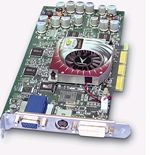'ZDNET Recommends': What exactly does it mean?
ZDNET's recommendations are based on many hours of testing, research, and comparison shopping. We gather data from the best available sources, including vendor and retailer listings as well as other relevant and independent reviews sites. And we pore over customer reviews to find out what matters to real people who already own and use the products and services we’re assessing.
When you click through from our site to a retailer and buy a product or service, we may earn affiliate commissions. This helps support our work, but does not affect what we cover or how, and it does not affect the price you pay. Neither ZDNET nor the author are compensated for these independent reviews. Indeed, we follow strict guidelines that ensure our editorial content is never influenced by advertisers.
ZDNET's editorial team writes on behalf of you, our reader. Our goal is to deliver the most accurate information and the most knowledgeable advice possible in order to help you make smarter buying decisions on tech gear and a wide array of products and services. Our editors thoroughly review and fact-check every article to ensure that our content meets the highest standards. If we have made an error or published misleading information, we will correct or clarify the article. If you see inaccuracies in our content, please report the mistake via this form.
VisionTek Xtasy GeForce4 Ti 4600


VisionTek Xtasy GeForce4 Ti 4600
pros and cons
- Blazingly fast multi-monitor support video in.
- Expensive new features not supported by the majority of games.
- Editors' review
- Specs
Serious gamers are always seeking the fastest graphics around, and VisionTek's flagship card features nVidia's most powerful graphics processing unit (GPU) to date -- the GeForce4 Ti 4600. It's got the power to use the latest features such as 3D textures and programmable pixel and vertex shaders. Even if you're playing older games that don't support these features, you can turn on anti-aliasing for enhanced image quality and still get a high frame rate. You don't get all this for nothing, though -- this is an expensive card.
This is the first retail card based on the GeForce4 Ti 4600 processor that we've seen -- the card benchmarked by ZDNet Germany earlier this year was a reference card from nVidia. Although there's little difference between that board and the one VisionTek supplies, we're now able to see what the total package includes. This 128MB card delivers a blistering 3DMark 2001 result of 9,261 with no anti-aliasing. With 2x anti-aliasing this drops to 7,908, and the score with Quincunx anti-aliasing doesn't differ significantly from 2x. With 4x anti-aliasing the card scores 5,970, and with the new mode of 4x sub-pixel anti-aliasing the score is 5,208. Even with all of the image quality enhancements turned on, this is still a fast card.
The card has three outputs -- one VGA, one DVI and one S-Video. The S-Video connector isn't a standard socket: instead, a breakout cable is plugged into it to provide video input and output from the same socket -- there isn't enough space on the blanking plate for another connector. There's no DVI-to-VGA adapter cable supplied, so if you want to use two CRT monitors -- or LCD monitors with VGA inputs -- you'll need to buy a separate adapter or even make one up yourself.
nVidia's nView technology allows you to use two displays with the card at once. These can be any combination of the three available outputs, but you'll need to be careful which monitors are connected to the card -- under Windows XP at least, the displays are auto-detected at startup, and you don't get to choose which ones you want to use. You can either use nView to manage your displays or your operating system, if it supports multiple monitors. nView display management is less flexible than native Windows support. It doesn't, for instance, let you set the resolution and colour depth for each display separately. Instead, it creates a virtual monitor within Windows that is spread across the two displays, either horizontally or vertically. You can also use nView to clone the desktop on both monitors. If one has a lower resolution than the other, the display will pan with the cursor on the smaller screen.
VisionTek supplies the Xtasy GeForce4 Ti 4600 with Cyberlink's PowerDVD for watching movies, and PowerDirector for making them. The card's S-Video input allows you to capture movie clips from an analogue video camera, and you can play the edited footage back out to a video recorder when you've finished.
Although the Xtasy GeForce4 Ti 4600 delivers more than just 3D gaming power, we'd suggest that you don't consider it unless you must have top-notch 3D performance. One of the lower-specification GeForce4 cards will deliver many of the same features at a more affordable price. But if you want the best combination of frame rate and image quality, there is only one GPU to go for at present -- and it's used on VisionTek's Xtasy GeForce4 Ti 4600.